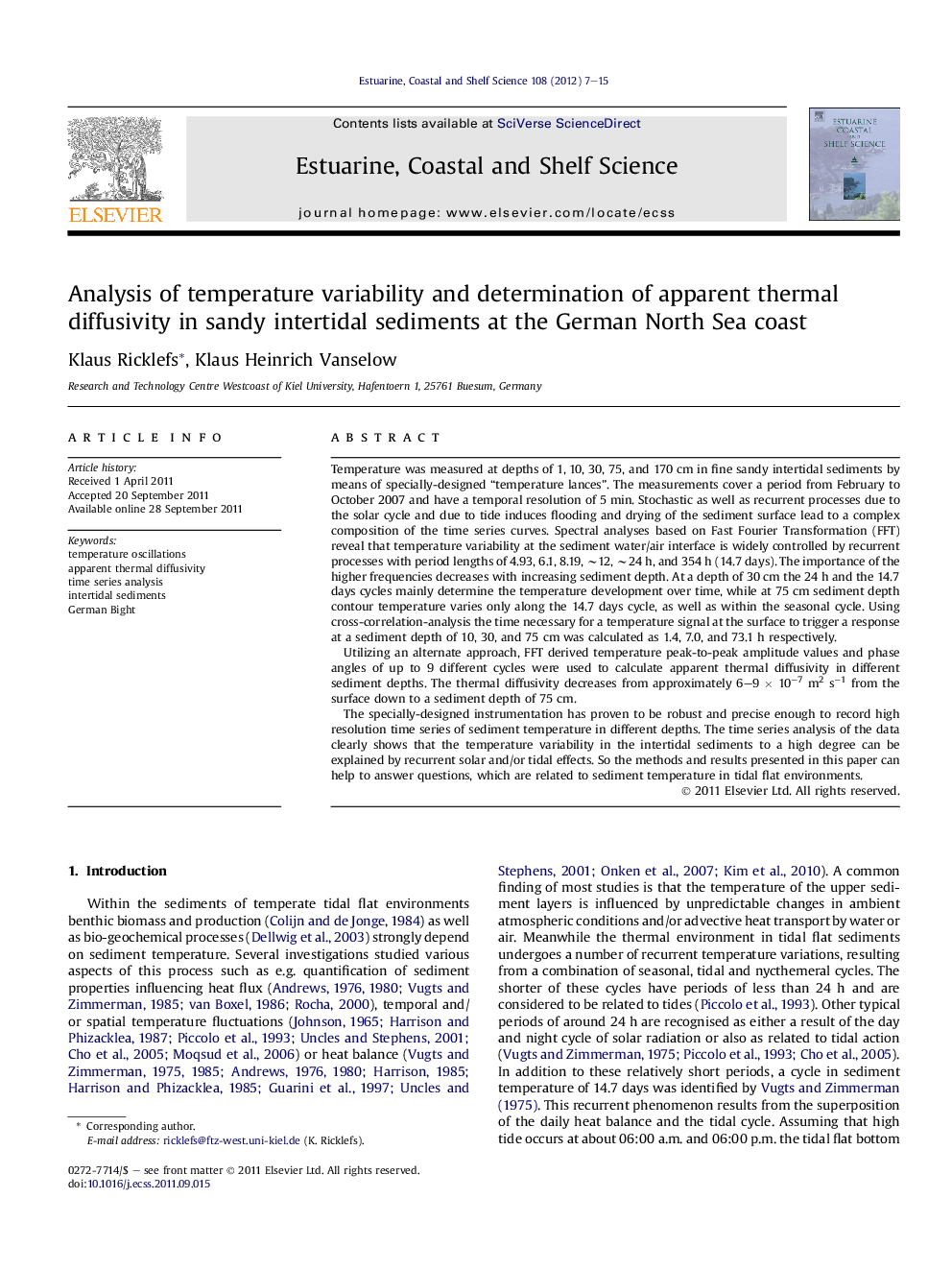| کد مقاله | کد نشریه | سال انتشار | مقاله انگلیسی | نسخه تمام متن |
|---|---|---|---|---|
| 4540201 | 1626687 | 2012 | 9 صفحه PDF | دانلود رایگان |

Temperature was measured at depths of 1, 10, 30, 75, and 170 cm in fine sandy intertidal sediments by means of specially-designed “temperature lances”. The measurements cover a period from February to October 2007 and have a temporal resolution of 5 min. Stochastic as well as recurrent processes due to the solar cycle and due to tide induces flooding and drying of the sediment surface lead to a complex composition of the time series curves. Spectral analyses based on Fast Fourier Transformation (FFT) reveal that temperature variability at the sediment water/air interface is widely controlled by recurrent processes with period lengths of 4.93, 6.1, 8.19, ∼12, ∼24 h, and 354 h (14.7 days). The importance of the higher frequencies decreases with increasing sediment depth. At a depth of 30 cm the 24 h and the 14.7 days cycles mainly determine the temperature development over time, while at 75 cm sediment depth contour temperature varies only along the 14.7 days cycle, as well as within the seasonal cycle. Using cross-correlation-analysis the time necessary for a temperature signal at the surface to trigger a response at a sediment depth of 10, 30, and 75 cm was calculated as 1.4, 7.0, and 73.1 h respectively.Utilizing an alternate approach, FFT derived temperature peak-to-peak amplitude values and phase angles of up to 9 different cycles were used to calculate apparent thermal diffusivity in different sediment depths. The thermal diffusivity decreases from approximately 6–9 × 10−7 m2 s−1 from the surface down to a sediment depth of 75 cm.The specially-designed instrumentation has proven to be robust and precise enough to record high resolution time series of sediment temperature in different depths. The time series analysis of the data clearly shows that the temperature variability in the intertidal sediments to a high degree can be explained by recurrent solar and/or tidal effects. So the methods and results presented in this paper can help to answer questions, which are related to sediment temperature in tidal flat environments.
Journal: Estuarine, Coastal and Shelf Science - Volume 108, 1 August 2012, Pages 7–15